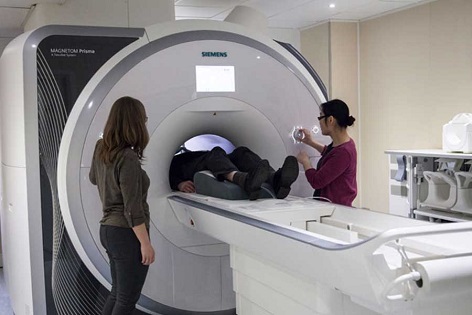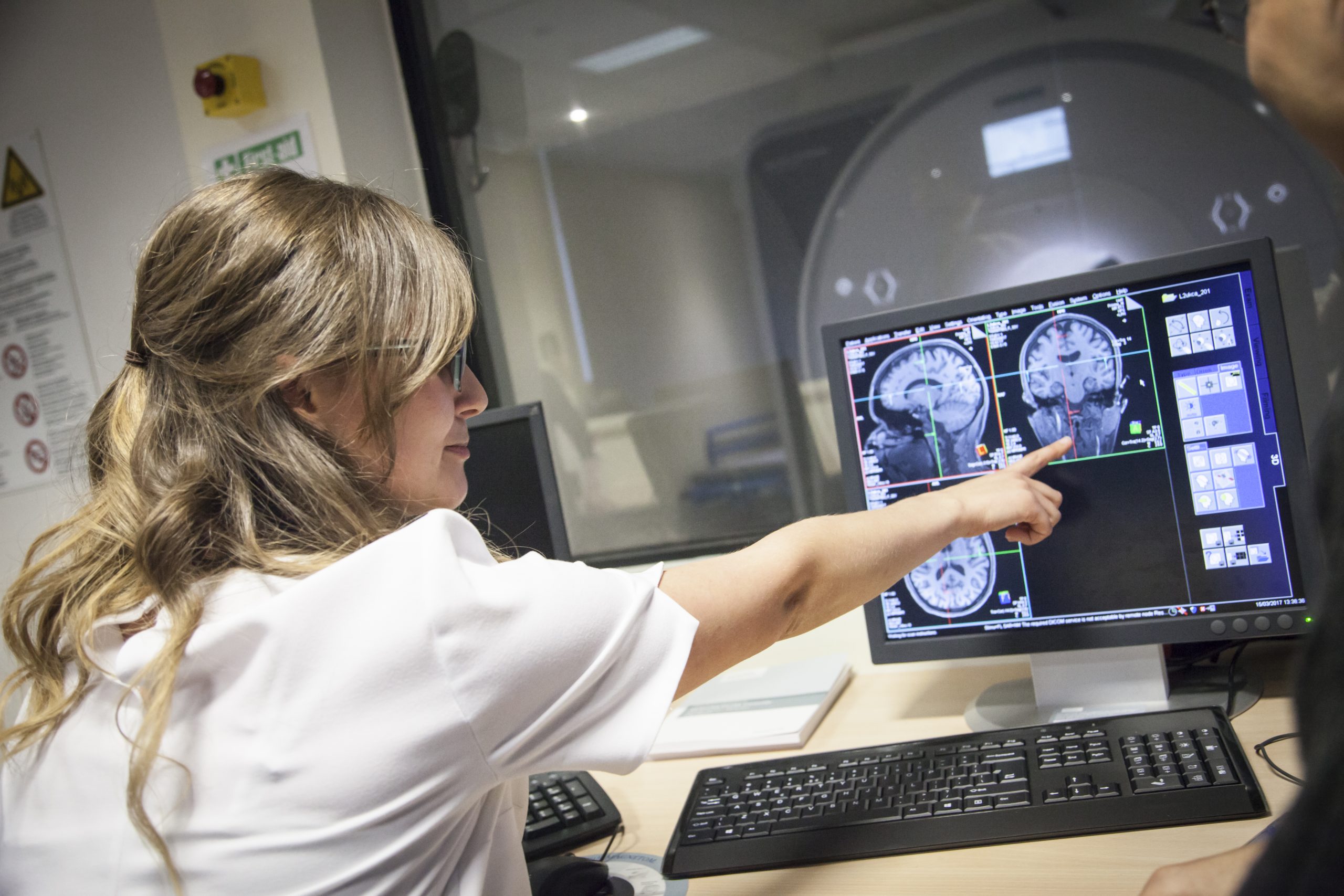Magnetic Resonance Imaging Unit
Magnetic Resonance Imaging (MRI) uses magnetic fields and radio waves to create images of bodies or other items placed in the bore of the MRI scanner. There are a number of different imaging modalities associated with MRI which we analyse at CINN.
These include structural MRI in which high-resolution structural imaging can be used to gage differences in grey and white matter, as well as ventricular morphology, and functional MRI. As opposed to structural MRI, functional MRI (fMRI) aims to measure the change in brain activity over time, by measuring the levels of oxygen in the brain, which increases when the brain is active. We also implement another similar technique, Arterial Spin Labeling (ASL), which provides information about the flow of blood to and from different brain regions. Finally, diffusion MRI (dMRI) also known as Diffusion Tensor Imaging (DTI) provides a detailed picture of the structural connections between brain regions.
Our Facilities At CINN we have a state-of-the-art Siemens MAGNETOM Prisma 3T MRI Scanner, fitted with a large selection of coils for clinical and research use. We have a stimulus presentation PC with MRI-compatible stimulus response pads and joysticks to measure participant responses to tasks presented on the screen. This is additionally supplemented by instruments measuring physiological features including eye tracking and breathing rate/volume, allowing for real-time data visualisation and performance monitoring. Our scanner is also of a few in the UK set up to perform concurrent TMS-fMRI, combining the advantages of both techniques (the temporal resolution of MRI and the spatial resolution of TMS). See the Multimodal Imaging or TMS tabs for more information.



